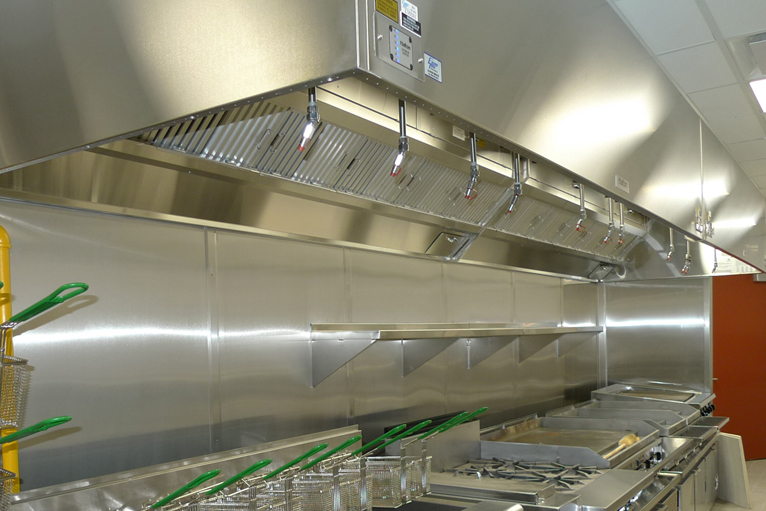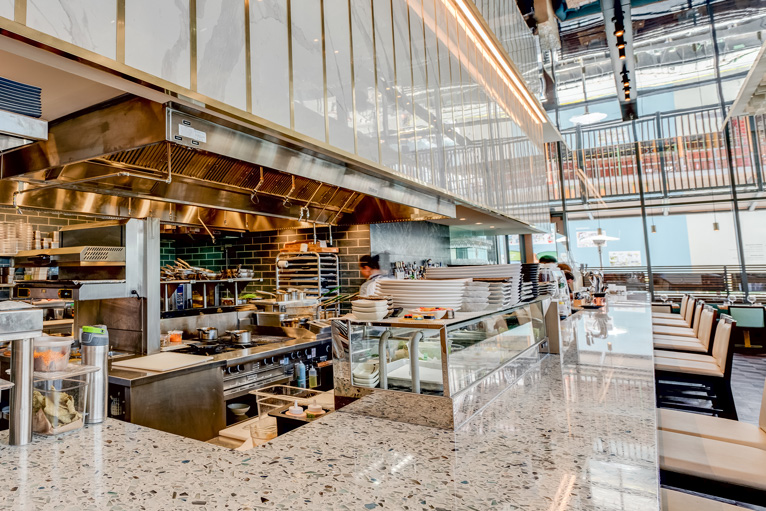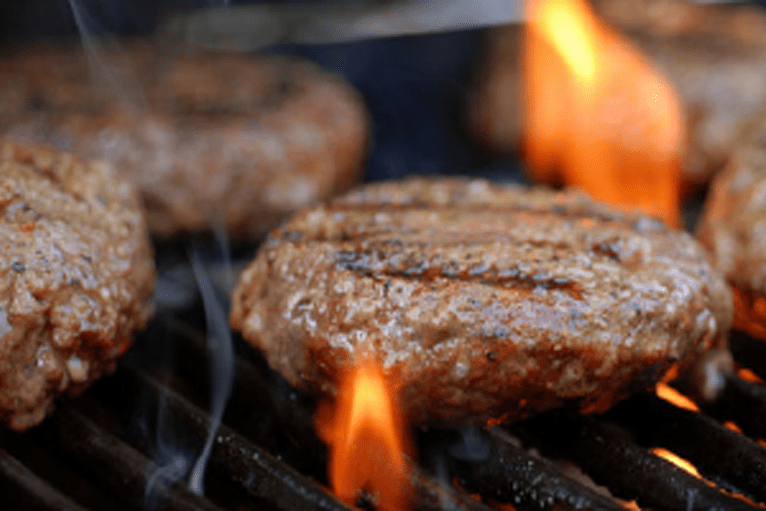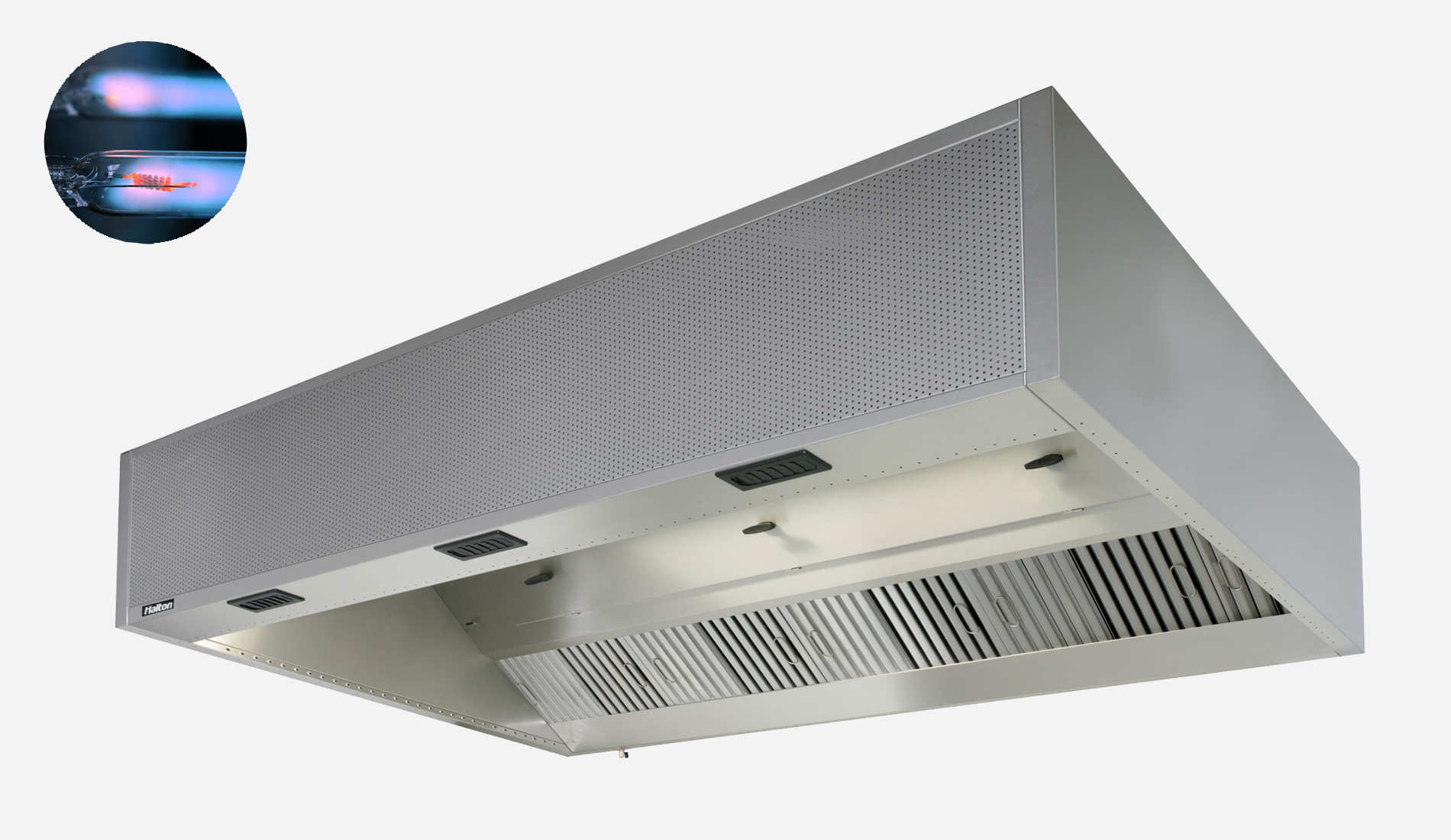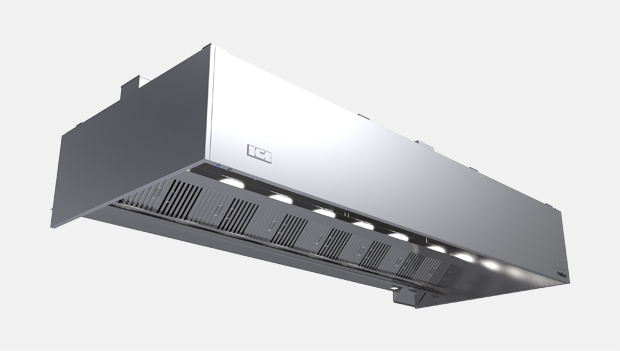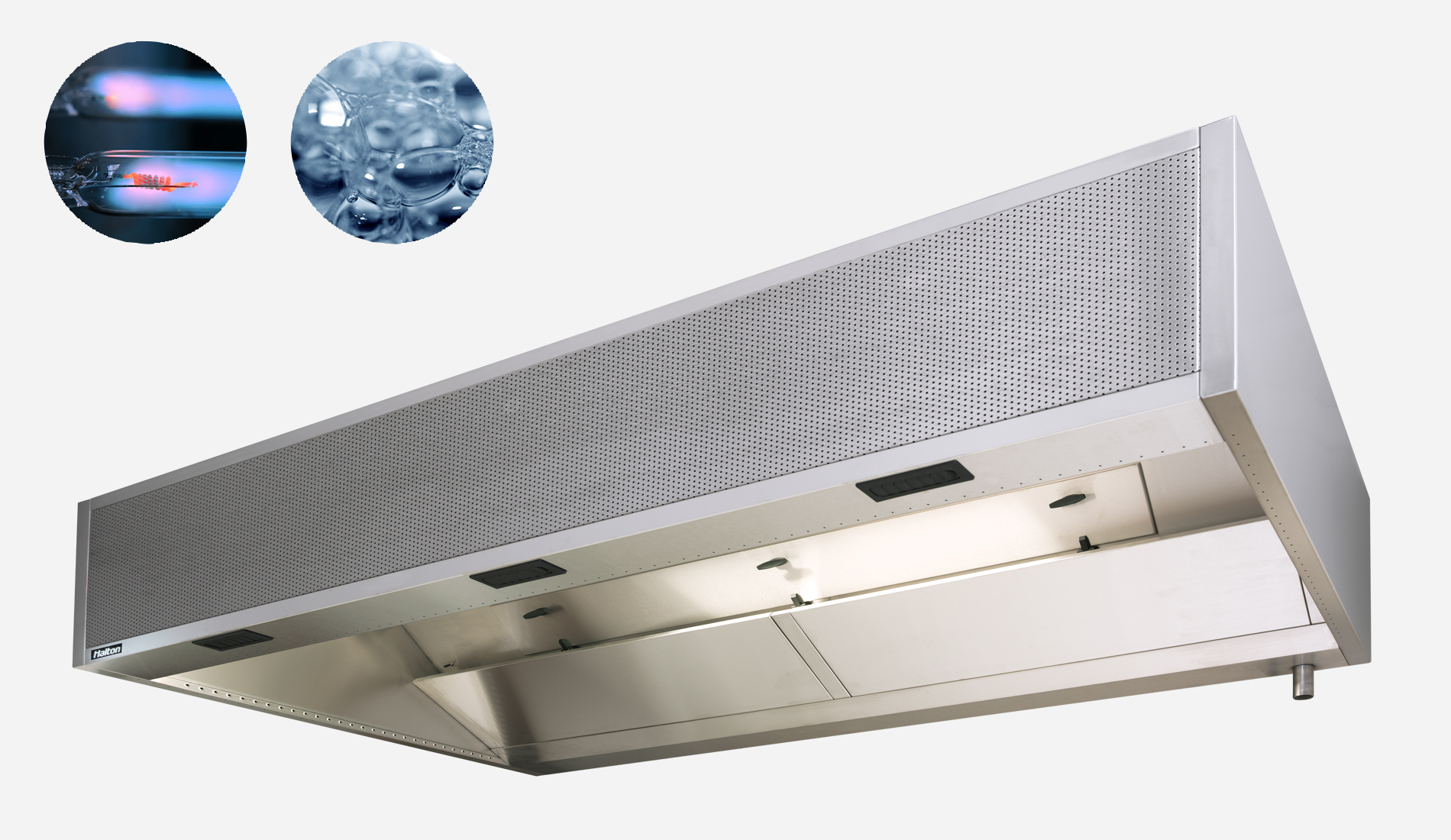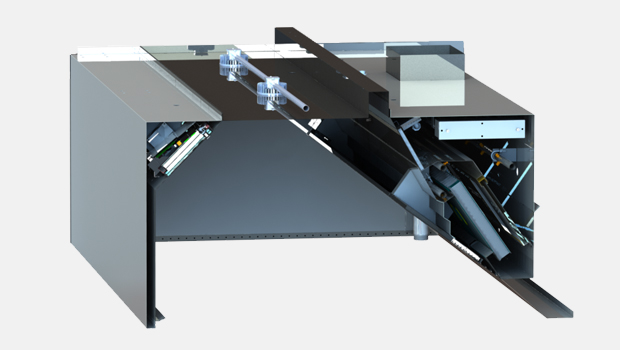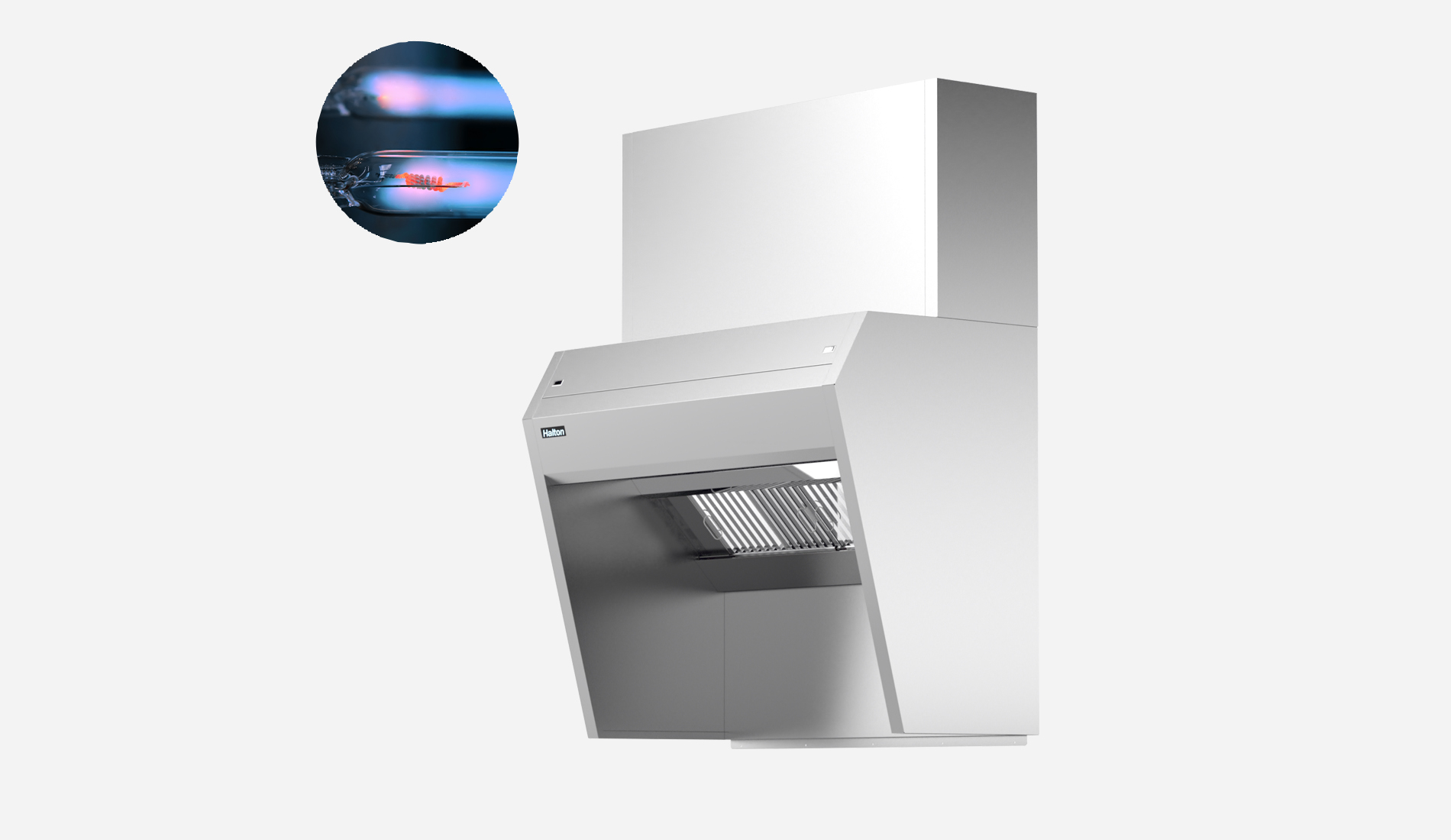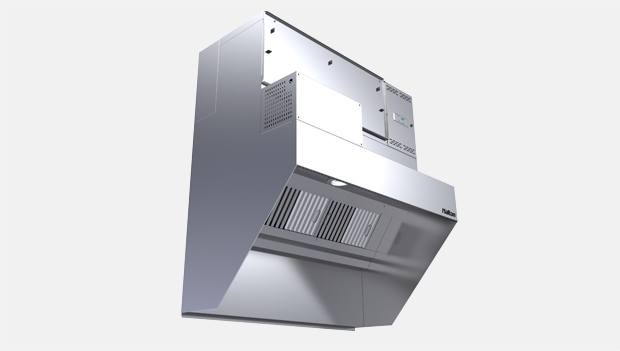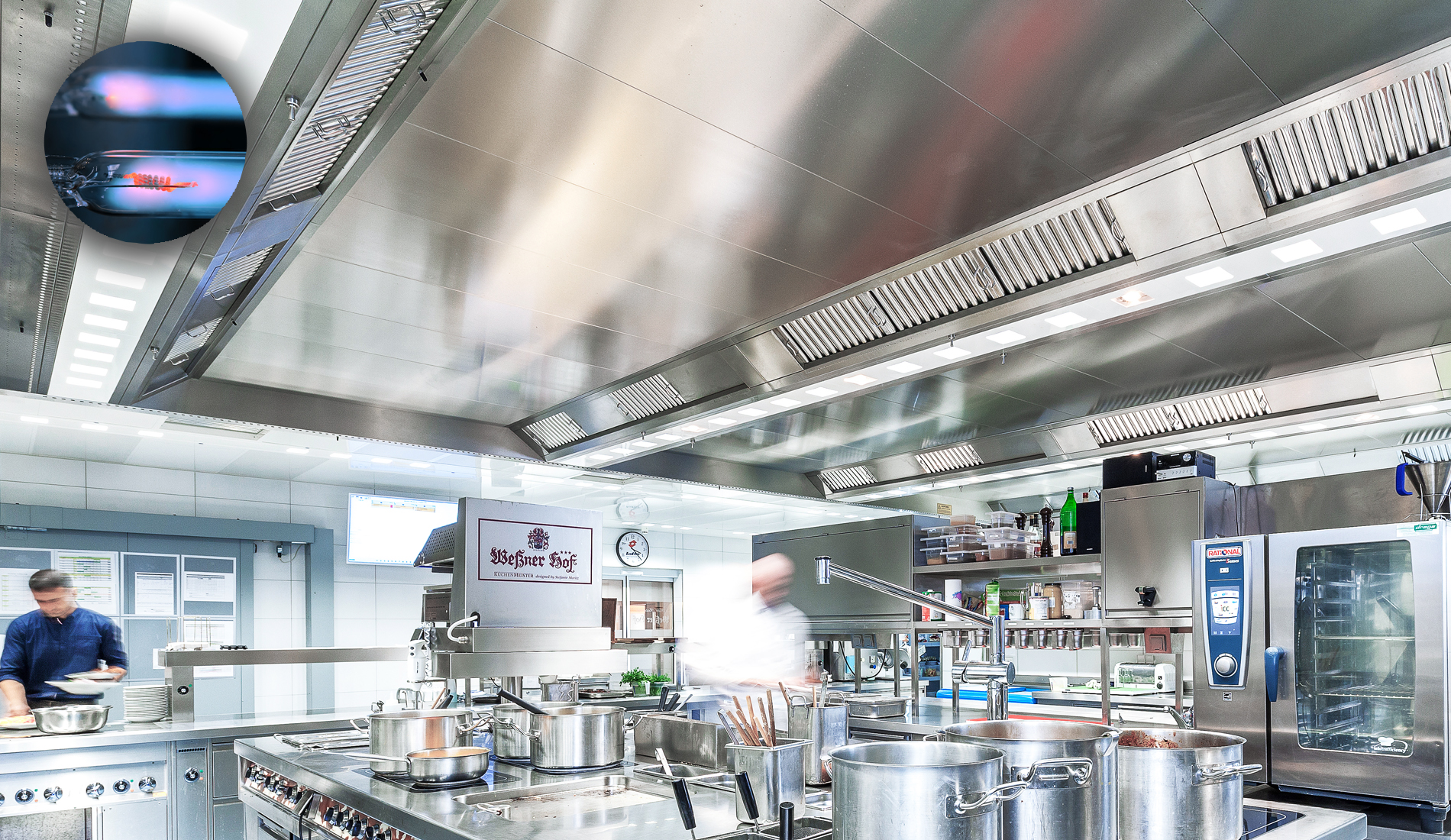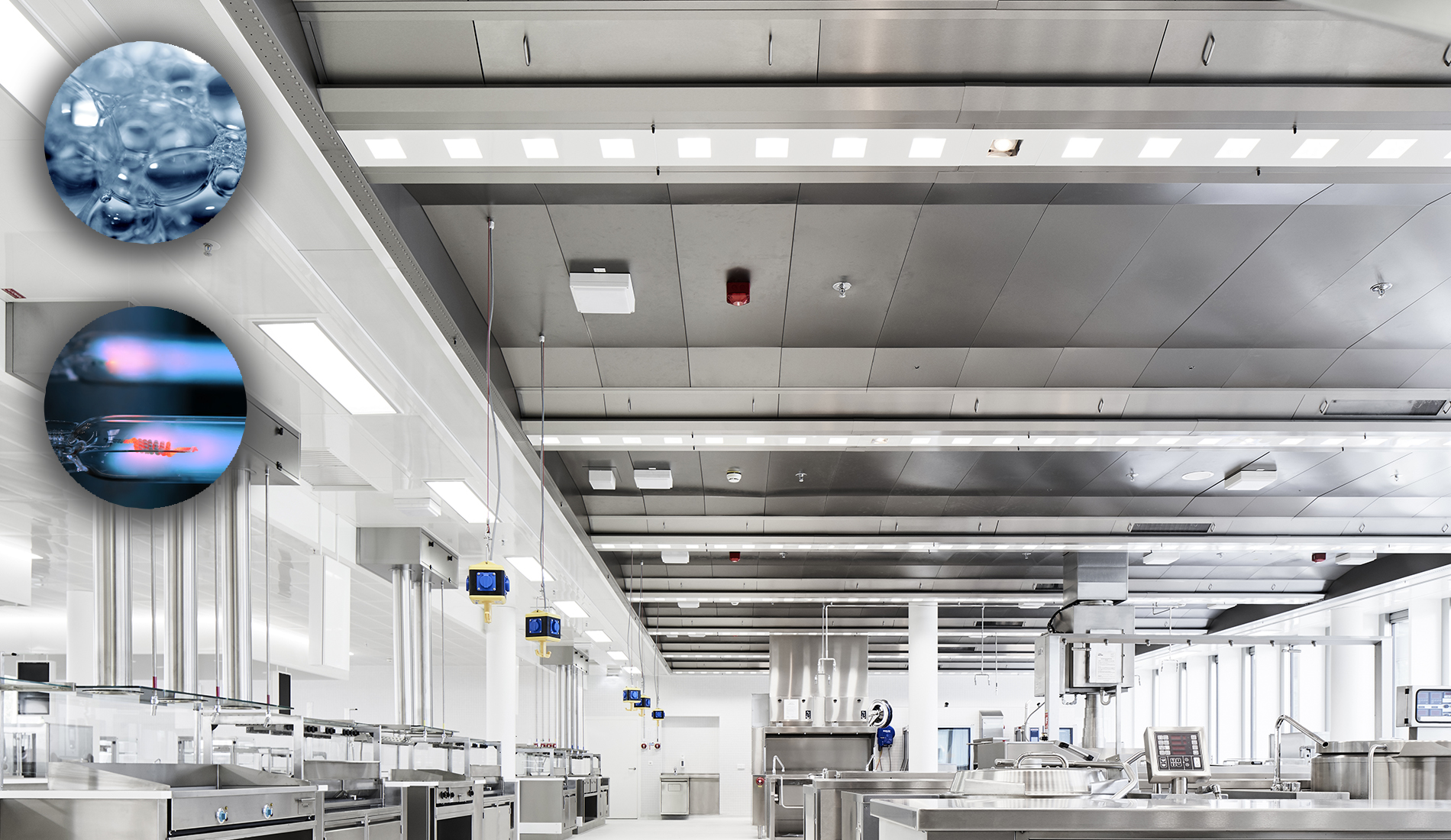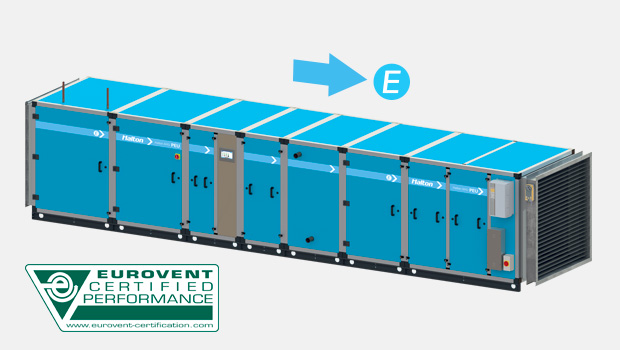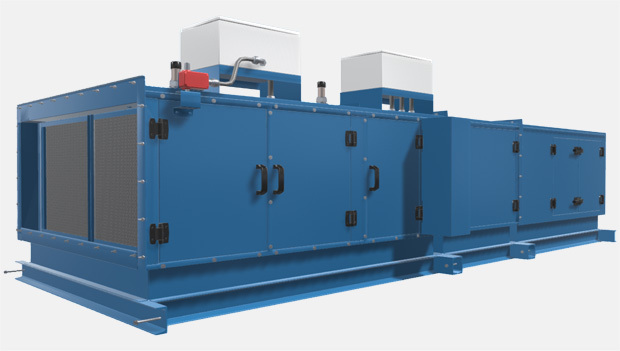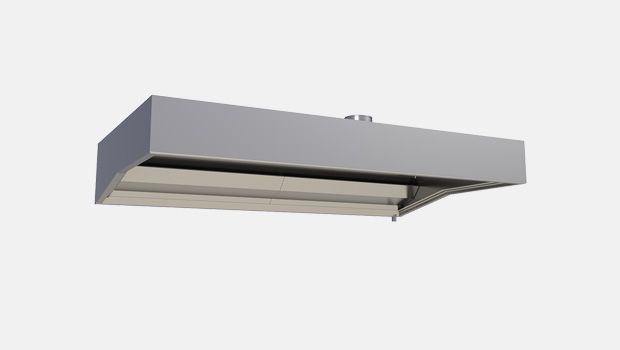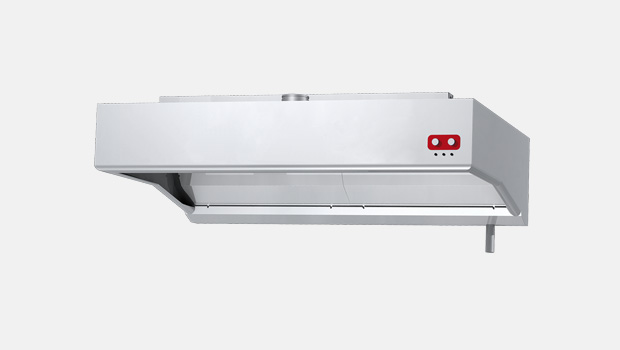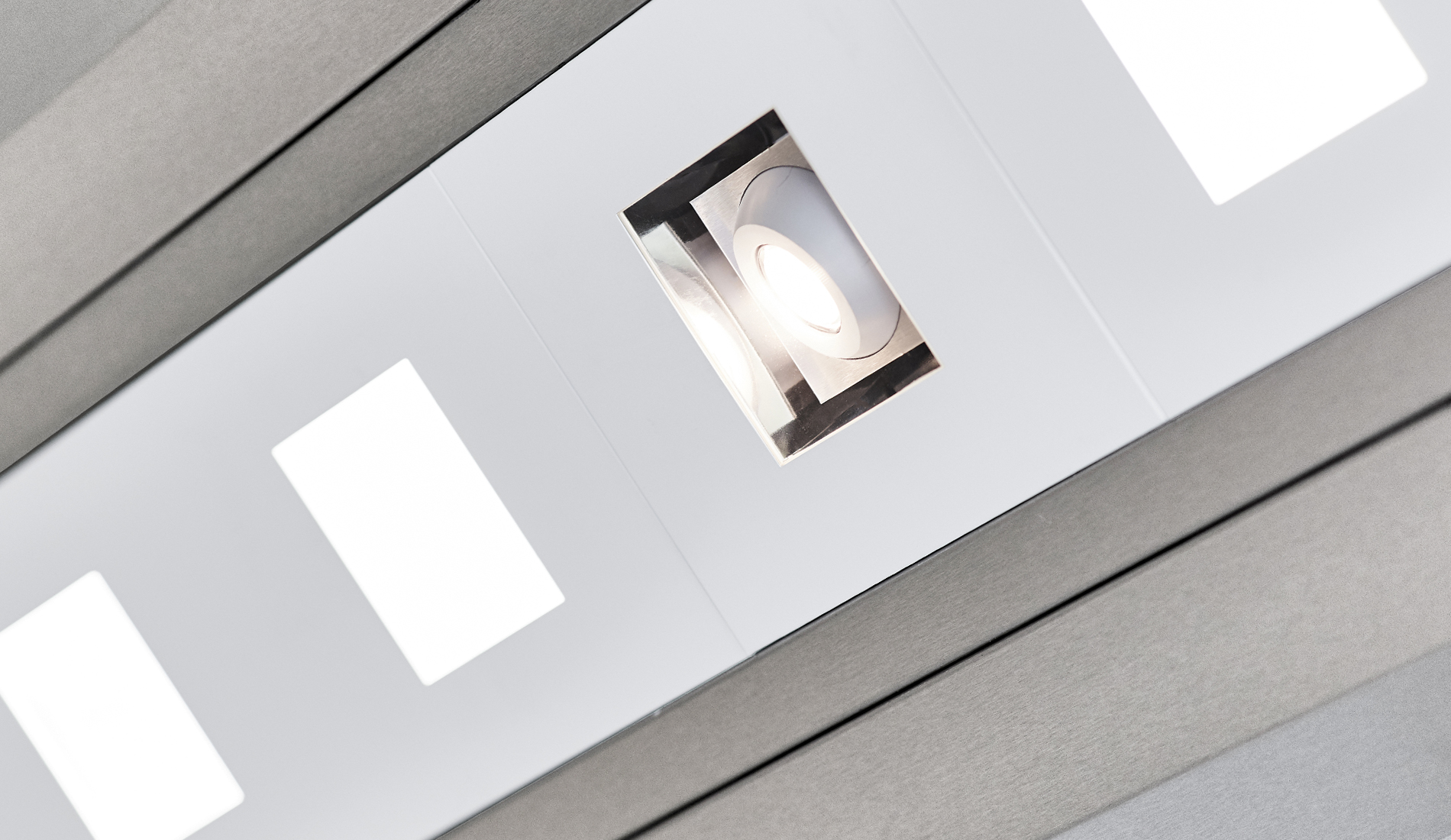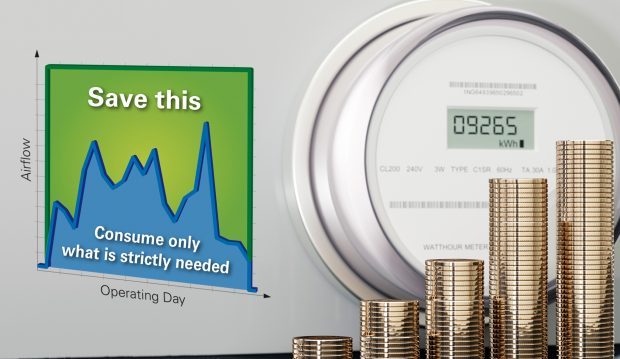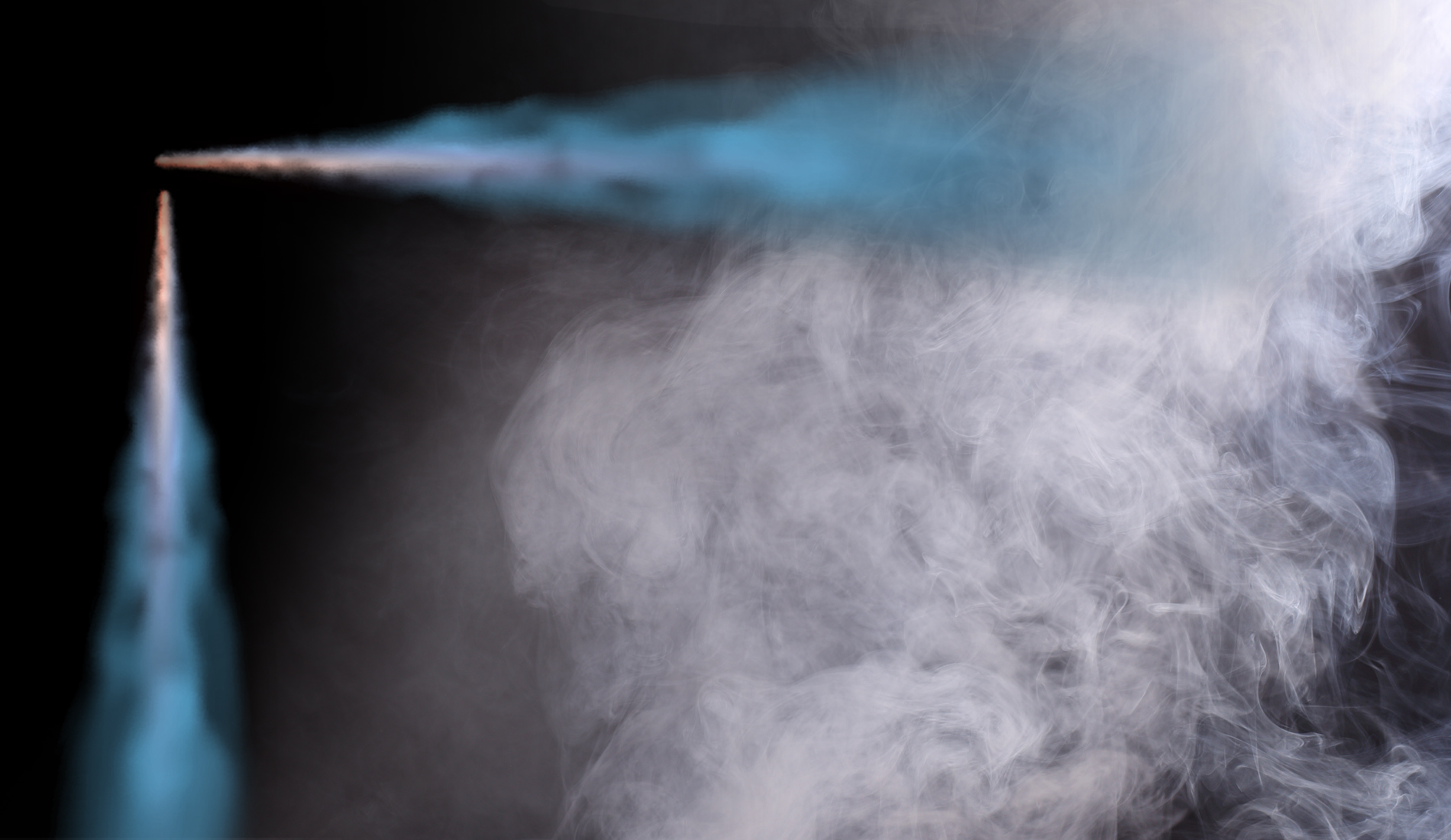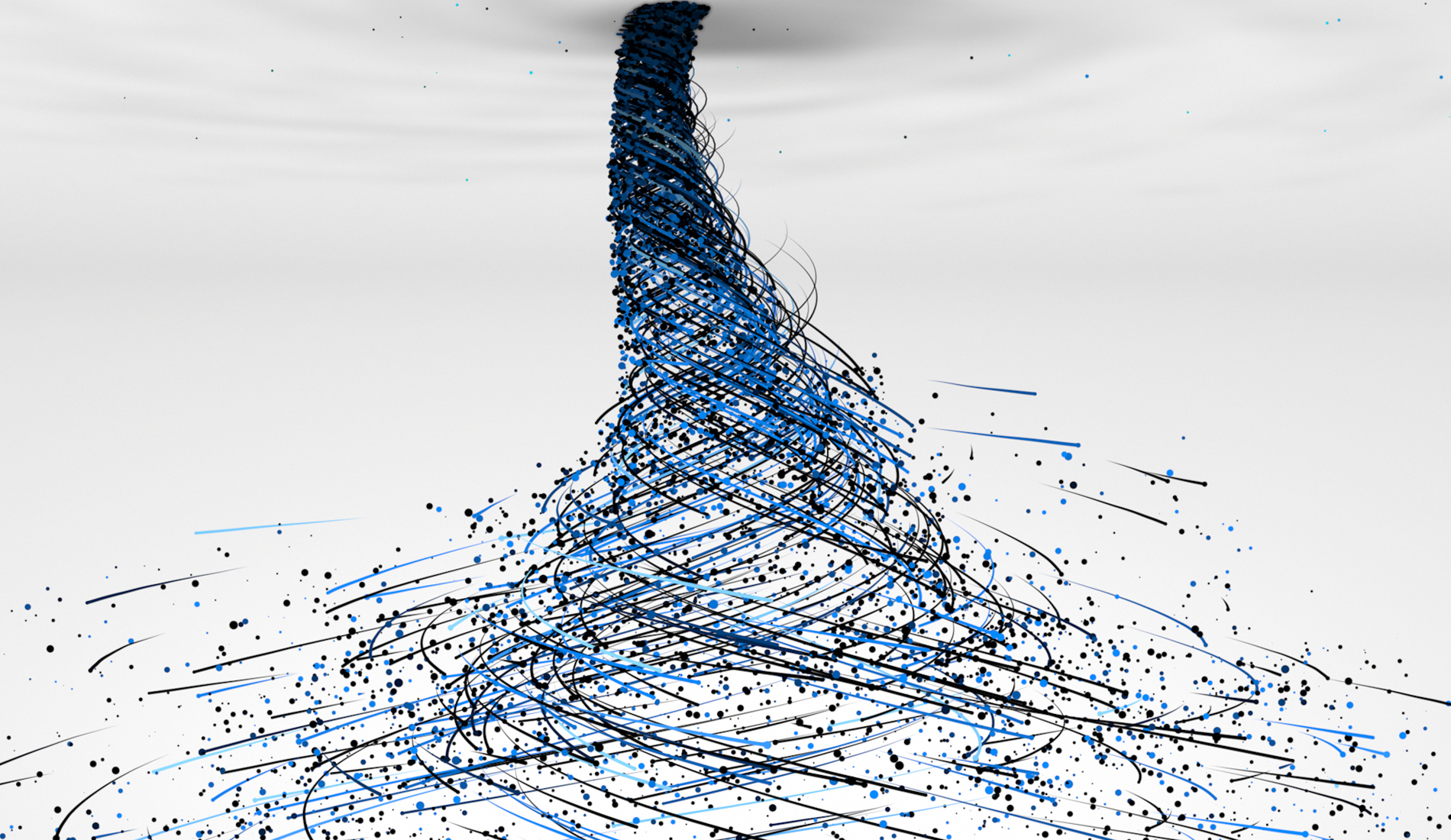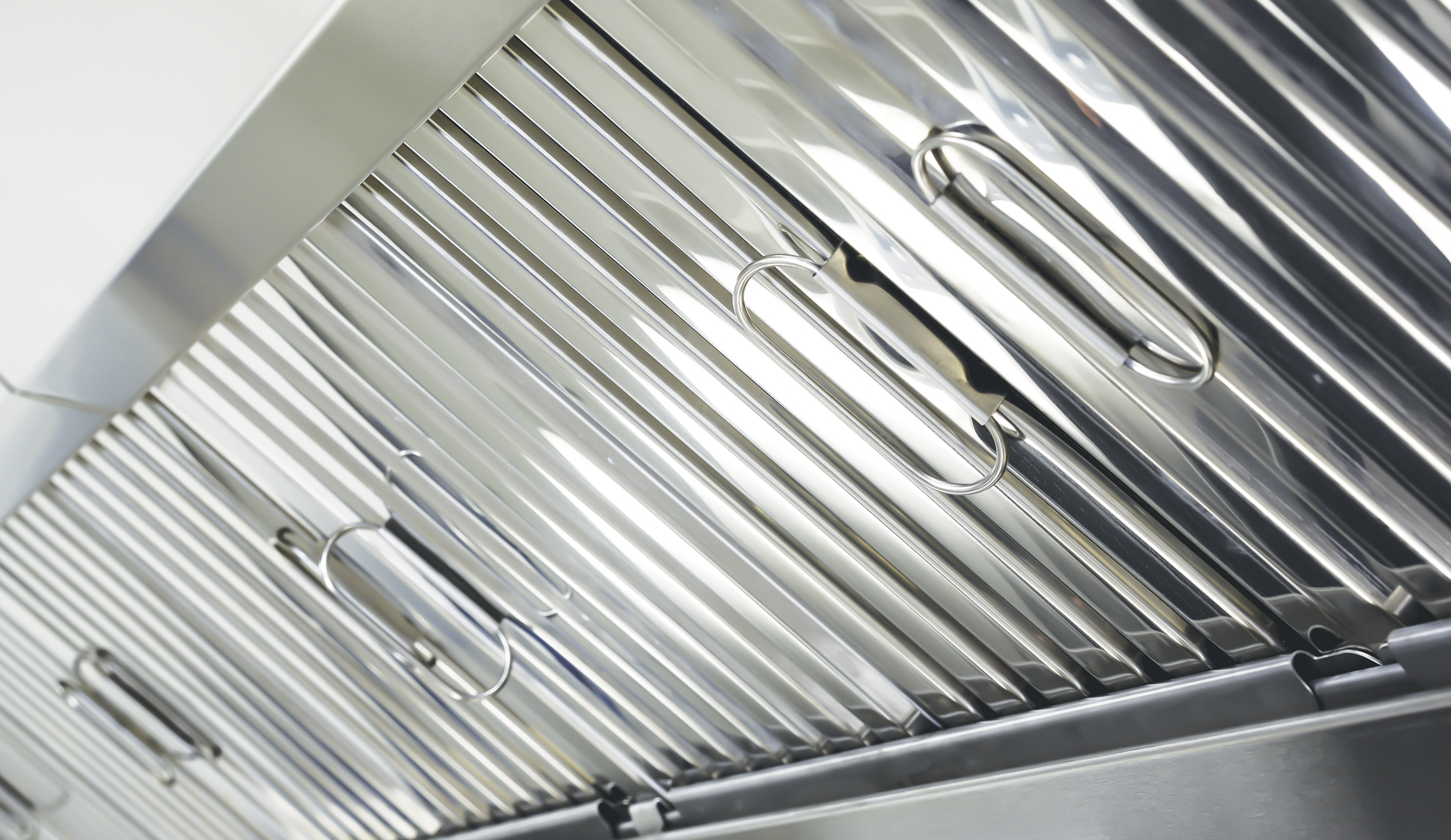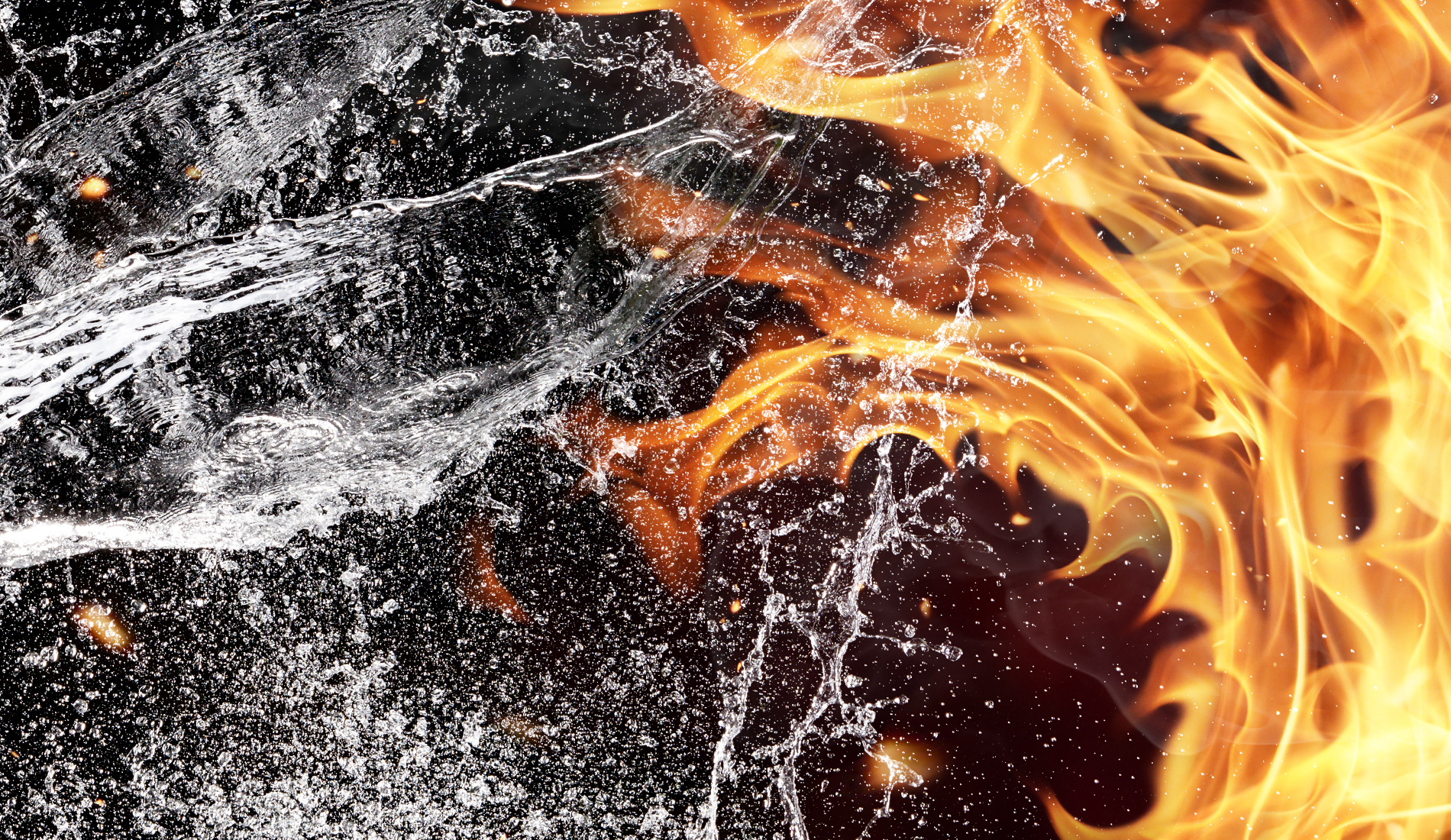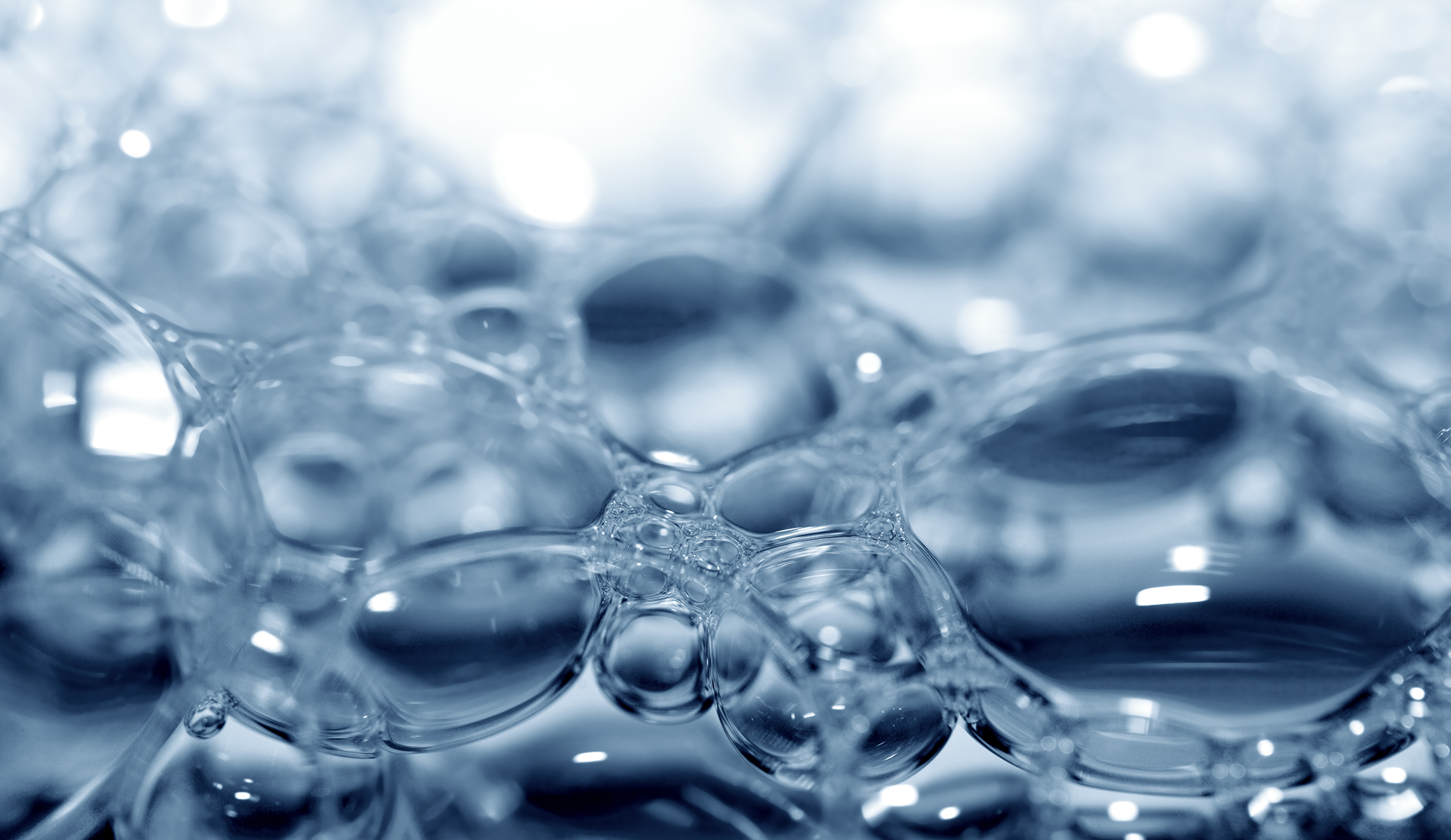
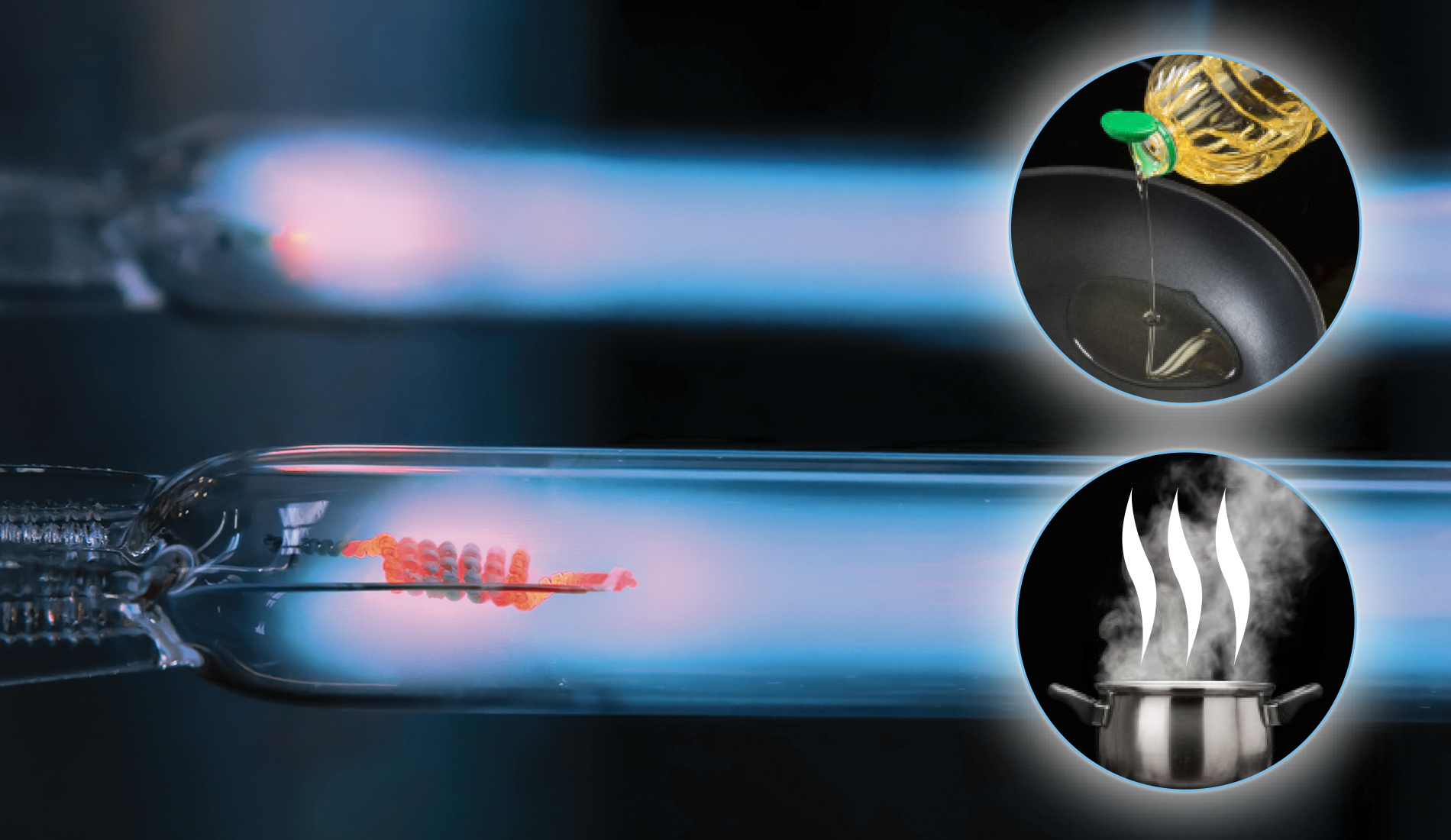
UV Capture Ray™ Technology
Cooking grease neutralization and odors mitigation for commercial kitchens
The UV Capture Ray™ technology neutralises the grease released by the cooking appliances. Combined with the KSA cyclonic filters, it reduces the grease build up in the ductwork to a negligible level. It also contributes to odors reductions discharged outside by the ventilation system.
Hygiene and fire safety levels of the ventilation are most significant, cleaning costs are minimum, and the kitchens’ environmental impact on the neighborhood is reduced significantly.
An asset to freely establish restaurants where they are of most value.
Benefits
The guarantee to safely operate commercial kitchens, in the locations with the highest turnover potential, with the lowest maintenance cost, makes of Capture Ray™ technology a profitable investment.

- Neutralises the smallest grease particles and grease vapours that can’t be removed by the primary mechanical filters. Even the highest efficiency mechanical extractors are not effective below 5 microns or removing vapours.
- The significant reduction in grease deposits reduces the cleaning costs for ductwork and exhaust plenums.
- Hygiene and fire safety levels of the ventilation are most significant.
- Contributes to the odor reductions discharged outdoor, lowering the kitchens’ environmental impact on the neighborhood and the risk of complaints or legal action.
- An asset to establish a restaurant wherever you chose in dense urban sites i.e. where they represent the highest turnover potential.
- The UV On Demand option activates the lamps only when cooking appliances are actually used. It saves up to one lamps set where the other UV systems require two.
- The Capture Ray™ technology benefit from Halton Connect & Care smart services that bring predictive maintenance and peace of mind to the forefront.
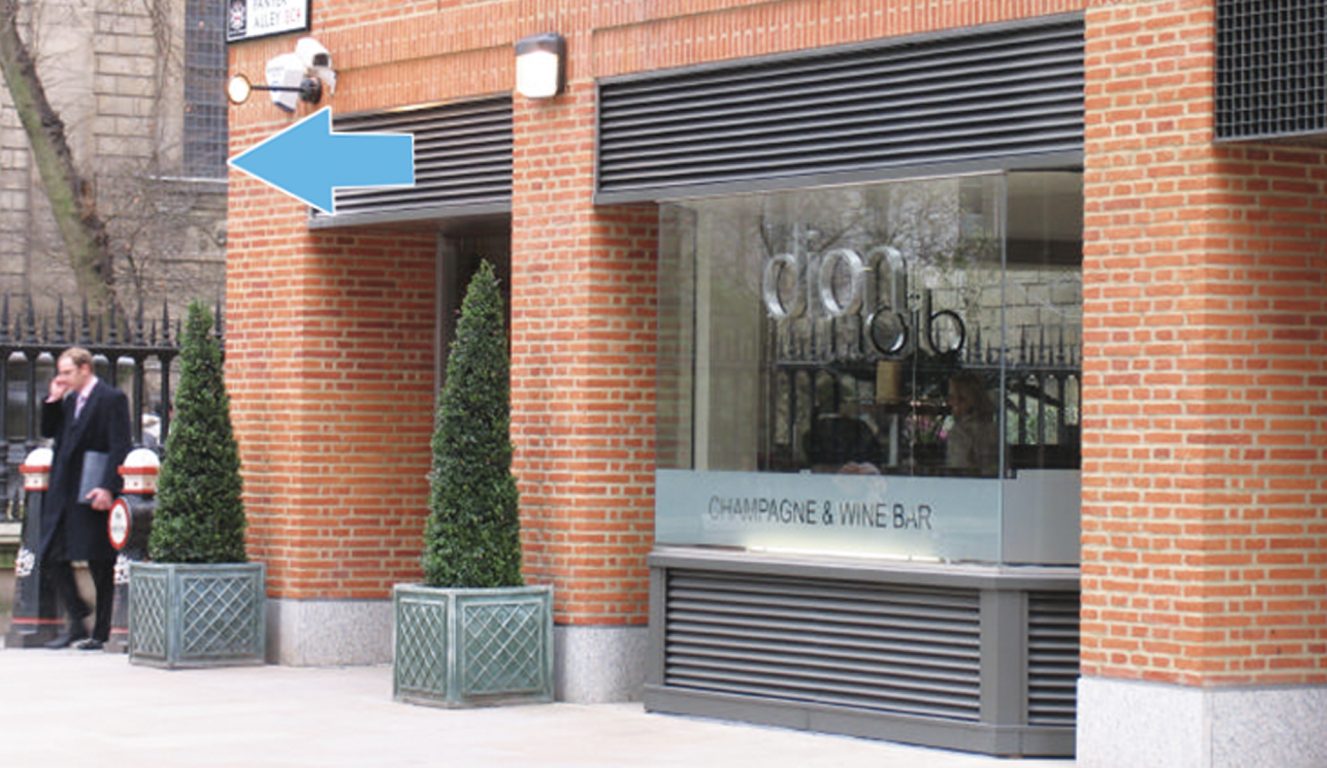
And what if we could do even better?
When combining the Capture Ray™ technology with PolluStop exhaust Air Handling Units, and by carefully selecting the number of UV lamps, airborne cooking odours will be minimized to a point that it can negate the need to discharge the effluent at a high level from the building. The ductwork can then follow the most direct and cost-effective route to outside, usually at street level. In that case
- It allows for the elimination of unsightly external duct risers and saves on installation costs.
- The elimination of internal duct risers increases the leasable space and corresponding revenues.
How does it work?
Integrated in Capture Jet™ hoods and ventilated ceilings, the UV-C Capture Ray™ technology is designed to neutralize small grease particles, grease vapours and organic compounds which are not captured by the primary filtering system, despite its efficiency. An efficient primary filtration remains a must as it is more effective on medium and large sized grease particles than the UV-C neutralization. So, the Capture Ray™ technology is always combined with the high efficiency KSA cyclonic filters.
Given that a large proportion of kitchen odours are carried by grease, it follows that a reduction of this grease leads to a simultaneous reduction in odour emissions to the outside. By increasing the number of UV-C lamps to a carefully calculated level, the odours carried through the air are mitigated to a point that it may no longer become necessary to discharge the air at roof-top level.
Capture Ray™ technology is based on the use of UV-C lamps. The Neutralisation of grease particles and vapours as well as the mitigation of the cooking odours depend on two simultaneous reactions.
Photolysis is the direct effect of UV-C radiation. It works by photodecomposition whereby grease molecules are broken down by photons.
Ozonolysis is the oxidation of grease molecules by ozone that is generated by the lamps. As ozone is a gas, it is carried with the airflow. Oxidation therefore takes place in the hoods’ and ventilated ceilings’ exhaust plenum as well as in the ductwork.
About UV on Demand technology
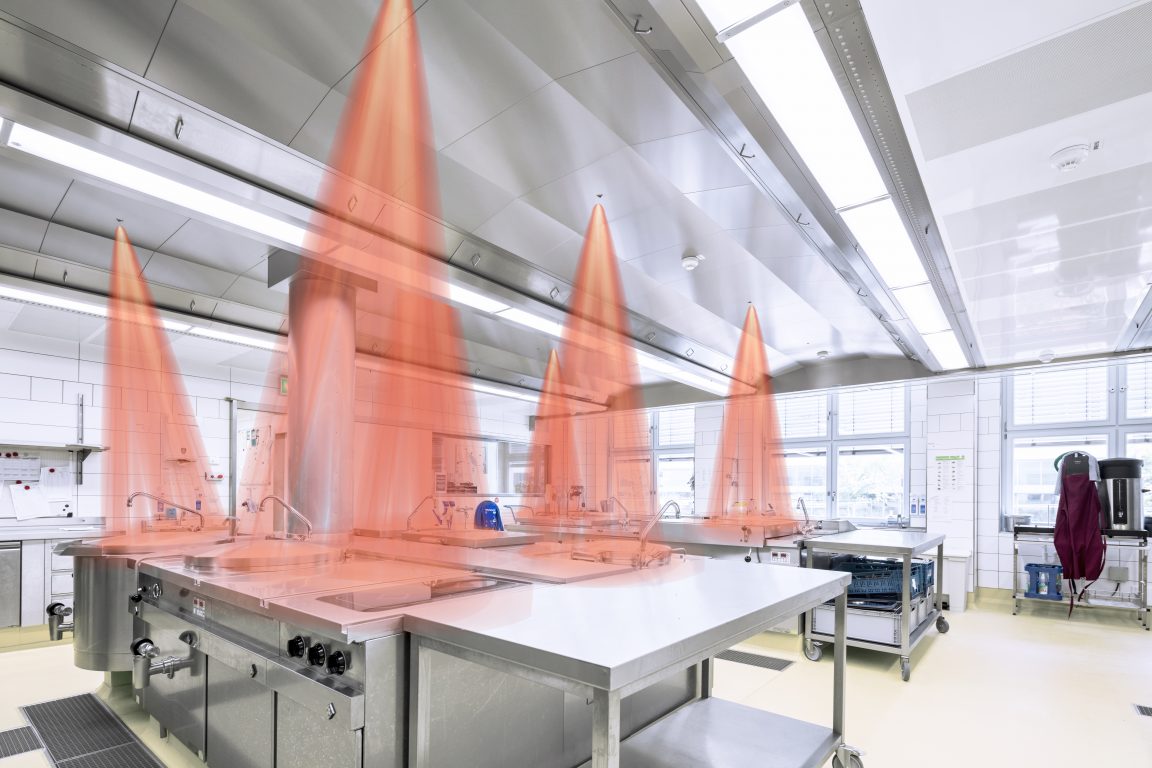
Halton developed a technology that monitors, in real time, the cooking appliances activity, thus activating the UV lamps only when it is strictly required.
This technology is based on Halton’s IRIS sensor (Infrared Radiation Index Sensor). Also used for M.A.R.V.E.L. Demand Controlled Ventilation system, it scans the surface of the cooking appliances to monitor, in real time, the cooking appliances activity. This enables activating the UV lamps only in cooking mode and not continuously, as soon as the fan is switched on.
This is a safe and responsible approach that saves a significant amount of lamp life. So, this technology reduces the maintenance costs while also saving energy.

One in two sets of UV-C lamps saved and 635€ electricity savings a year on only two hoods installed in a restaurant, central London.
- The restaurant is equipped with two UV Capture Ray™ hoods (6 UV lamps each) and a PolluStop exhaust air handling unit. It opens 88 hours a week.
- The cooking block comprises two griddles, 2 fryers and a fry scuttle for a total electric power of 50 kW. The cooking appliances operate 92 hours a week. The UV lamps of a traditional system are on while the main fan is running – 92 hours per week too.
- Over 4 weeks monitoring, the UV on Demand technology reduced the number of operational hours of the lamps by an average of 44% (up to 50% depending on cooking appliances use). In other words, and compared to the maintenance cost of the traditional systems, it saves up to one UV lamps replacement out of two.
- The electricity consumption of the lamps was reduced by 47 kWh per week which represents 635€ a year (0,26€/kWh).
About Halton Connect & Care
Halton Connect is a state-of-the-art IoT (Internet of Things) platform whose core is an advanced cloud-based portal. It enables 24/7 remote monitoring of the solutions designed by Halton. It allows access to important and useful information along with powerful data analytics to the end users. It also provides crucial information to our engineers. In return, they can remotely and safely control all systems and their settings when required.
This digital “two directions” technology opens the way to Premium Services that are vital to keep the performance of the systems and technologies at the initial design level and during the entire lifecycle. Even better! They enable continuous optimisation of your systems, resulting in even lower operating costs.


Deeper Knowledge
To know more about the neutralization of grease by UV, read our latest articles and information about it.
Related products
Embedded on hoods, ventilated ceilings or exhaust Air Handling Units, the UV Capture Ray™ technology is used on a vaste range of Halton Solutions.
Here are couple of products that are equipped with the UV Capture Ray™ technology. For ships & ferries’ galleys, the hoods are UV compatible and the UV Capture Ray™ technology is an option.


